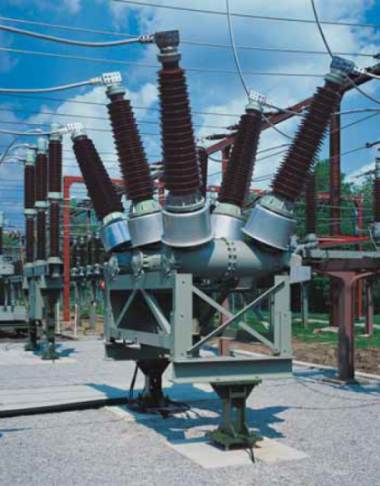Difference Between Live and Dead Tank Circuit Breakers

Siemens Dead Tank Circuit BreakerA quick post in connection with an email question:
Live Tank - the circuit breaker the switching unit is located in an insulator bushing which is live at line voltage (or some voltage above ground). Live Tank circuit breakers are cheaper than dead tank and require less space.
Dead Tank - the switching unit is located within a metallic container which is kept a earth potential. As the incoming/outgoing conductors are taken through insulated bushings, it is possible to place current transformers on these (with a Live Tank arrangement this is not possible and separate CTs are required).
The terms Live and Dead Tank normally only apply to high voltage circuit breakers